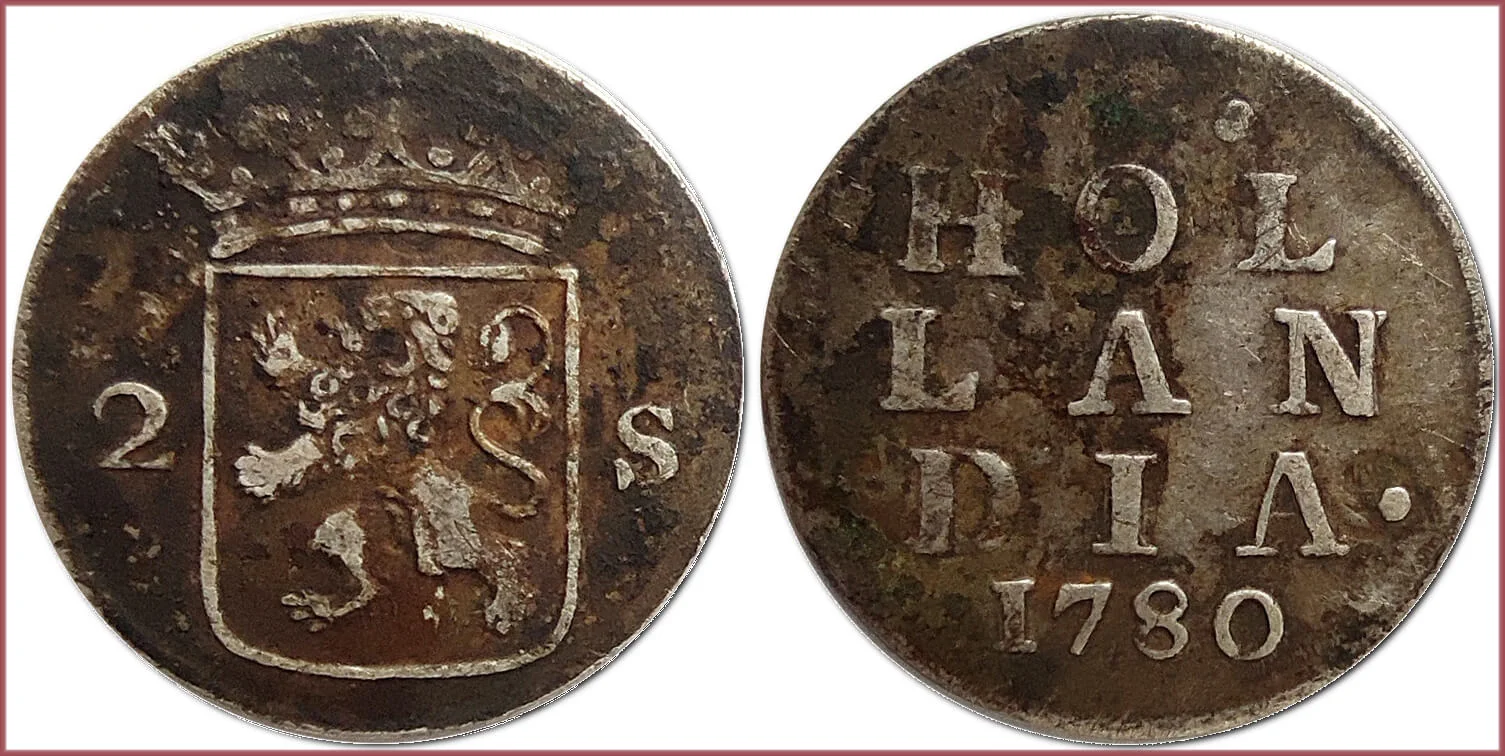STUIVER: COIN OF NETHERLANDS (HOLLAND)
2 stuivers, 1780: The Republic of the Seven United Netherlands
The Republic of the Seven United Netherlands, commonly referred to in historiography as the Dutch Republic, existed from 1588 to 1795. It was a predecessor state of the modern Netherlands. It comprised Groningen, Frisia, Overijssel, Guelders, Utrecht, Holland and Zeeland.
2 S (denomination of the coin): 2 Stuivers.
The lion as the coat of arms of Holland: a historical area in the west of the modern Netherlands; one of the states that formed the Republic of the Seven United Netherlands.
HOLLANDIA: Holland.
- Silver (0.853): 19.5 mm - 1.52 g
- Reference price: 7.3$
COIN STUIVER — WHERE & WHEN (coins catalog: by names & emitents)
- BURGUNDIAN NETHERLANDS + SPANISH NETHERLANDS + DUTCH REPUBLIC /THE REPUBLIC OF THE SEVEN UNITED NETHERLANDS/ + KINGDOM OF HOLLAND (15th-19th centuries): stuiver = 8 duit = 1/20 gulden
- DUTCH CEYLON (17th-18th centuries): stuiver
- DUTCH CURAÇAO (19th century): stuiver = 1/6 reaal
- NETHERLANDS EAST INDIES (17th-19th centuries): stuiver = 8 duit = 1/20 gulden
The name of the coin stuiver comes from the Dutch word "Stuiven" — "Sparkle": from the radiant (sparkling) flint from the Order of the Golden Fleece depicted on the first varieties of stuivers. The chain of the Order of Knights is made of gold links in the form of flints and tinderbox, the result of friction against each other — sparks. The chain of the Order of Knights is made of gold links in the form of flints and tinderbox, the result of friction against each other — sparks.
It is also known about the most related another coin — stiver (British Ceylon, Demerara and Essequibo...).

